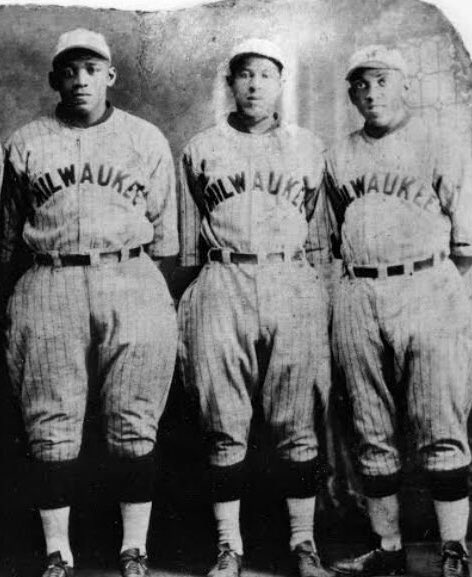If there’s one thing this website needs, it’s yet another column. Listen, I like to categorize things, I’m a big fan of things being neat and tidy. Hence this website having so many columns despite them all being written by myself and two other people. Anyways, my latest idea was for an occasional column detailing the history of unaffiliated franchises. We all know the history of Major League Baseball franchises and affiliated Minor League Baseball franchise history isn’t that hard to track down. The unaffiliated leagues, however, are rife with interesting teams and histories that aren’t all that well known, and now I’m going to start telling you about them. Originally this column was going to be about exploring the history of Negro Leagues franchises and nothing else. While I still plan on covering Negro Leagues franchises, ultimately I feel there is so much unaffiliated history worth covering that I will be writing about Negro Leagues franchises and those outside of the Negro Leagues.
Before we begin, it’s important to define what constitutes a franchise. For most a franchise is tied into ownership. Teams can move cities but as long as the ownership, or at least ownership lineage, remains the same then the franchise remains the same franchise it was in the previous city and under a different name. I’ve always viewed it differently and tied a franchise into a name. The Milwaukee Brewers of the American Association and Major League Baseball? Completely different owners and have no ties other than the name but I view them as the same team because of that shared name. That being said, I’m using the ownership lineage model for franchises talked about in this column, though sometimes it will get a little murky.
Franchise Names
Milwaukee Bears (1923)
Leagues
Negro National League (1923)
Locations
Milwaukee, Wisconsin, United States of America
Ballparks
Athletic Park (1923)
Notable Players
Frank Duncan, Pete Hill, and Joe Strong
Notable Managers
Titles
None
All-Time Record
14-52-1, .212
History
Once a year the Milwaukee Brewers do a Negro Leagues tribute night. They offer various educational opportunities, have Negro Leagues historians and personalities at the event, sell Negro Leagues memorabilia, and give away Bears hats. That event happens once a year and then for the most part Milwaukeeans move on with their Brewers lives and the Bears are forgotten. That is until this year, when the downtown streetcar, called the Hop, has been decked out in the colors and logo of the Bears since May and plans to keep that design to the end of the year. Seeing The Hop while I’m out running calls has succeeded in doing something Bears Night at Miller Park/American Family Field has never managed to do, keep the Bears in my mind long term.
There’s no blame to be tossed around when it comes to the fleeting nature of the Bears in the minds of most Milwaukee area baseball fans. They were after all a fleeting baseball team that only lasted for one season and didn’t technically finish their lone season of existence. They struggled with attendance from the get-go, which is surprising as Athletic Park, which would come to be known as Borchert Field, always drew good crowds for any baseball being played on the grounds. Struggle the Bears did and that actually led to a scenario where the Bears played the majority of their games on the road in an attempt to barnstorm interest.
Before we get ahead of ourselves, how did the Bears come to be? Well, unfortunately not much is known about that aspect of the Bears history. We know that with the NNL having two open spots to fill for the 1923 season the Bears were created to handle one of those spots. The majority of their players were ported over from the disbanded Pittsburgh Keystones. The rest of the rost consisted of players from the independent New Orleans Crescent Stars. That leads one to believe that there was some kind of connection present between the two teams if not a case where Crescent Stars ownership owned the Bears as well.
From all accounts, the main guiding force behind the club was Rube Foster, the architect of the NNL. It wasn’t uncommon for Foster to attempt to guide teams through his league so as to produce the strongest league possible. Unfortunately, the Bears simply weren’t up to snuff. They finished 14-52-1 in combined play and a lowly 12-41 in NNL play. That was good enough for last in the league before they disbanded. It’s clear that their demise was brought about by a lack of financial resources as well as an inability to connect with Milwaukee area baseball fans.
An obvious fact is that the Milwaukee of today is not the same as the Milwaukee of 1923. At that time black people represented a clear minority in the population, only 1.2%. In the most recent United States Census black people accounted for 38.7% of Milwaukee’s population. There are many economic and discriminatory issues facing the black population of Milwaukee in the present day, but beyond that, it is abundantly clear that the population base simply did not exist to support a Negro major leagues ballclub in Milwaukee in 1923. Unfortunately, by the time the black population of Milwaukee was growing by leaps and bounds, the Negro Leagues were on their last legs. Thus, the Bears remain a historical footnote and the only Negro major league team in the history of Milwaukee, Wisconsin.
Lead photo courtesy of Unknown – Borchert Field

